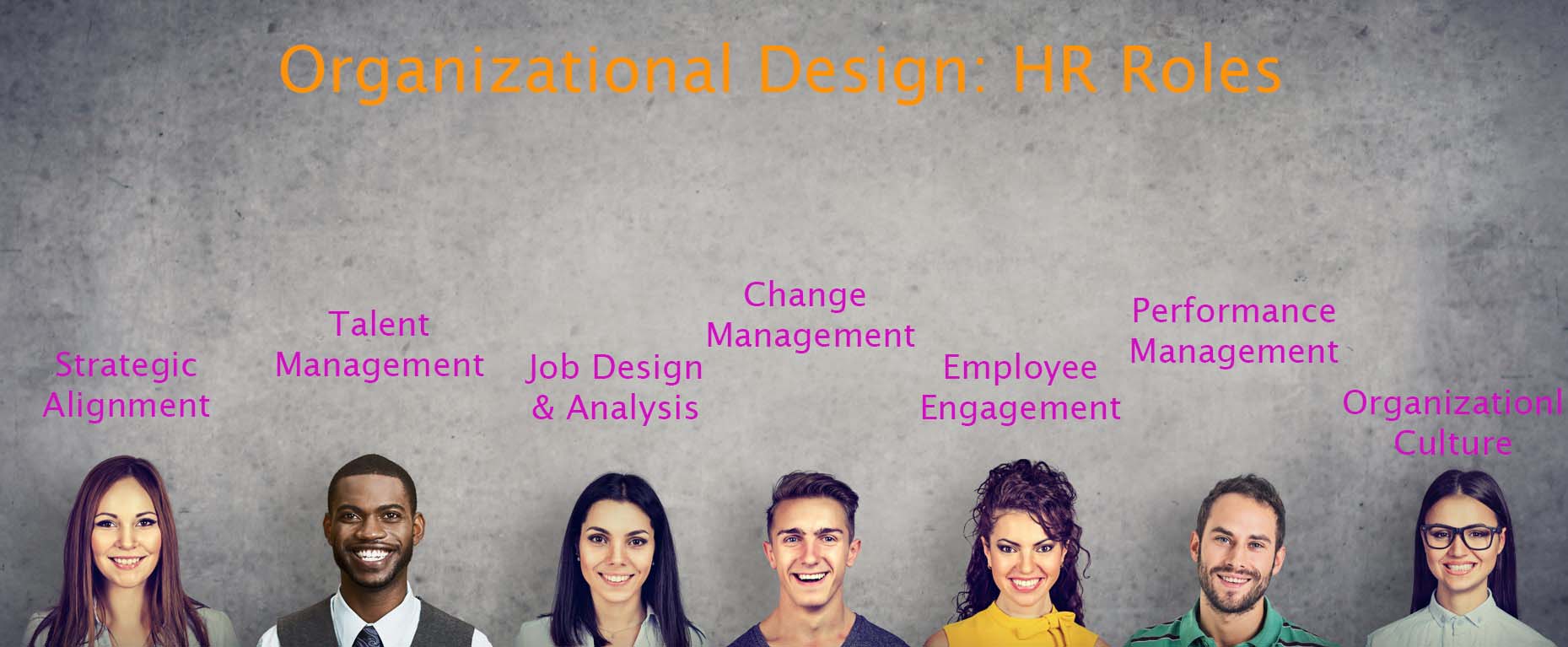Organizational Design
Organizational design is the creation, execution, and administration of a strategic plan for shaping the way a company is structured and run.
By Brad Nakase, Attorney
Email | Call (800) 484-4610
Get Smarter. Search FAQs.
What is organizational design?
Organizational design refers to the process of structuring and aligning a company’s resources, roles, processes, and systems to achieve its strategic objectives. It involves determining how various components of a company, or organization, should be set up and how they interact with each other.
Let’s use an example to better understand the difference between a company with good organizational design (Company A) and a company with poor organizational design (Company B):
Company A:
Company A has a clear organizational design structure that is aligned with its strategic goals and fosters efficient communication and collaboration. It has a well-defined hierarchy with clear lines of authority and responsibility. The company also has a flat organizational structure, which encourages employee empowerment and decision-making at many levels. Further, Company A emphasizes cross-functional teams and encourages collaboration and information sharing across departments.
In terms of processes, Company A has streamlined workflows and well-defined roles and responsibilities, minimizing duplication of efforts and ensuring efficient coordination. It has implemented robust performance management systems, including regular feedback and performance evaluations, to align individual and team goals with business objectives. The company also emphasizes ongoing training and development opportunities to enhance employee skills and competencies.
Company B:
In contrast, Company B has poor organizational design, leading to various challenges. The company has a hierarchical structure with multiple layers of management, resulting in slow decision-making and a lack of employee empowerment. Communication channels are limited, and information flow is restricted, causing delays and misalignment of goals.
The processes in Company B are often convoluted and lack clarity. Roles and responsibilities are not well-defined, leading to confusion and duplication of efforts. There is little collaboration or sharing of information between departments. Performance management systems are inadequate, and feedback and evaluations are sporadic or inconsistent, hampering employee development and motivation.
It can therefore be said that Company A demonstrates good organizational design by having a clear and flexible structure, effective communication and collaboration, streamlined processes, and a focus on employee empowerment and development. Company B, by contrast, suffers from a hierarchical and rigid structure, poor communication, inefficient processes, and a lack of employee engagement and development.
What does an organizational design initiative need to have?
An effective organizational design initiative should have the following components:
- Strategic Intent: The organizational design initiative should clearly articulate the company’s strategic intent and long-term goals. It should align the design of the organization with these strategic objectives to ensure that all aspects of the design support the company’s overall direction and vision.
- Guiding Principles: Guiding principles in organizational design are the fundamental beliefs and values that shape the company’s culture and behavior. They provide a framework for decision-making and serve as a reference point for designing the organization. The organizational design initiative should establish guiding principles that reflect the desired culture and help guide the design decisions.
- Capability Maps: Capability maps identify and define the key capabilities or competencies required by the company to achieve its strategic goals. These maps help identify the skills, knowledge, and resources needed at various levels and functions within the organization. They provide insights into the capabilities that need to be developed or acquired to support the desired organizational design.
- Operating Model Blueprint: The operating model blueprint outlines the key components and mechanisms that define how the company will function. It includes the structure, processes, policies, and systems that govern how work gets done. The organizational design initiative should develop a comprehensive operating model blueprint that aligns with the strategic intent and enables efficient and effective operations.
- Work Design: Work design refers to the process of structuring job roles, tasks, and responsibilities within the organization. It involves defining the scope of work, establishing clear roles and accountabilities, and ensuring that workflows and processes are well-structured and optimized. The organizational design initiative should include a thorough work design that promotes clarity, efficiency, and employee engagement.
- Workforce Plan: The workforce plan outlines the talent and skills required to execute the organizational strategy. It involves assessing the current workforce, identifying skill gaps, and developing strategies for attracting, developing, and retaining talent. The organizational design initiative should incorporate a workforce plan that aligns with the strategic intent and supports the capability maps and work design.
- Performance Measures: Performance measures are metrics and indicators used to assess the success and effectiveness of the organization. They provide feedback on performance, help track progress towards goals, and inform decision-making. The organizational design initiative should establish performance measures that align with the strategic intent and allow the company to track its performance and make necessary adjustments.
What role does Human Resources have in organizational design?
Human Resources (HR) plays a crucial role in organizational design. HR professionals are responsible for managing the people-related aspects of organizational design initiatives. Their role involves facilitating the alignment between the organization’s strategic objectives and the design of its human capital.
The following are some of the primary roles and responsibilities of HR in organizational design:
- Strategic Alignment: HR works closely with senior leadership, business attorney, and other stakeholders to understand the organization’s strategic objectives and translate them into actionable plans. They ensure that the organizational design supports the strategic direction by aligning the structure, roles, and processes with the desired outcomes.
- Talent Management: HR plays a critical role in identifying the talent requirements of the company. They assess the current workforce, identify skill gaps, and determine the competencies and capabilities needed to support the organizational design. HR also takes part in talent acquisition, development, and retention strategies to ensure the organization has the right people in the right roles.
- Job Design and Analysis: HR professionals are responsible for designing and analyzing job roles within the organization. They work to define clear job descriptions, determine the required skills and qualifications, and establish appropriate salary ranges. HR also ensures that job roles are properly aligned with the company’s structure and overall design.
- Change Management: Organizational design often involves significant changes, such as restructuring, process re-engineering, or cultural shifts. HR plays a key role in managing the change process by developing change management strategies, communicating with employees, addressing concerns, and providing support and training to facilitate a smooth transition.
- Employee Engagement: HR focuses on fostering employee engagement throughout the organizational design process. They facilitate communication channels to keep employees informed and involved. HR also ensures that employees are properly engaged in decision-making processes, such as seeking feedback on proposed changes and incorporating employee perspectives into the design.
- Performance Management: HR helps design and implement performance management systems that align with the organizational design. This includes setting performance standards, establishing performance measures, and providing feedback and coaching to employees. HR also ensures that performance measures are linked to the company’s strategic objectives and drive employee motivation and development.
- Organizational Culture: HR plays a vital role in shaping and reinforcing the organizational culture through the design process. They work to establish values, behaviors, and norms that align with the desired culture. HR also ensures that the organizational design supports a positive and inclusive work environment.
What are the main principles of organizational design?
- Specialization Principle. The specialization principle suggests that tasks should be divided and assigned to individuals or teams based on their specialized knowledge, skills, and abilities. By allocating work to those with the expertise and training to perform it efficiently, companies can achieve higher productivity and quality outcomes. Specialization promotes efficiency, as individuals become more proficient in their specific roles through practice and experience.
- Coordination Principle. The coordination principle emphasizes the need to establish effective mechanisms for coordinating the efforts of individuals and teams within an organization. As tasks and responsibilities are divided, it becomes essential to ensure that different units or departments work together smoothly to achieve common goals. Coordination mechanisms may include regular communication, collaboration tools, cross-functional teams, or shared objectives and metrics. Effective coordination minimizes the risk of confusion, reduces conflicts, and enhances overall company performance.
- Knowledge and Competence Principle. The knowledge and competence principle highlights the significance of developing and utilizing the knowledge and skills within an organization. This principle involves attracting, retaining, and developing talented individuals who possess the necessary expertise and competencies required for organizational success. It emphasizes investing in employee training, fostering a learning culture, and encouraging continuous professional development. By valuing and utilizing the knowledge and competence of its employees, an organization can gain a competitive advantage and adapt to changing market conditions.
- Control and Commitment Principle. The control and commitment principle emphasizes the need for a balance between control mechanisms and employee commitment. Companies must establish appropriate control mechanisms, such as performance management systems, policies, and procedures, to ensure that work is carried out effectively and aligned with organizational objectives. However, excessive control may stifle creativity and innovation and decrease employee commitment. Thus, organizations should also focus on fostering a culture of trust, empowerment, and employee involvement to promote commitment, motivation, and engagement.
- Innovation and Adaptation Principle. The innovation and adaptation principle recognizes the importance of organizational flexibility and the ability to innovate in response to internal and external changes. Companies need to create an environment that encourages and supports creativity, experimentation, and risk-taking. This principle emphasizes the need for organizations to continually adapt to new technologies, market trends, and customer demands. It involves encouraging ideas from all levels, promoting cross-functional collaboration, and fostering a culture that values innovation.
What are the main factors that affect organizational design?
- Strategy
A company’s strategy is a crucial factor in determining its design. The organizational design should align with the strategic goals and objectives of the organization. For example, if the strategy is focused on innovation and rapid product development, the design may emphasize cross-functional teams and flexible structures. On the other hand, if the strategy is focused on cost efficiency and standardization, a more centralized and hierarchical design may be appropriate. The organizational design should support the strategy by providing the structure, processes, and resources necessary to achieve strategic objectives.
- Environment
The external environment in which an organization operates significantly influences its design. Factors such as industry dynamics, market conditions, competition, and regulatory requirements shape a company’s design choices. For example, businesses that operate in highly dynamic and turbulent environments may require a flexible and decentralized design to respond quickly to market changes. The organizational design should be adaptive to the external environment, enabling the organization to effectively navigate challenges and leverage opportunities.
- Technology
The type of technology and the level of technological complexity within an organization impact its design. Technological advancements can influence work processes, communication channels, and decision-making. For instance, companies adopting digital technologies and automation may require flatter structures, agile teams, and efficient information-sharing systems. The organizational design should be compatible with the technology employed, enabling smooth integration and maximizing operational efficiency.
- Size and Life Cycle
The size and life cycle stage of an organization also affect its design. Small organizations tend to have simpler structures and informal communication channels due to fewer layers of management. As companies grow, they may require more formalization and specialization to maintain coordination and control. Further, the life cycle stage of the organization, such as start-up, growth, maturity, or decline, can influence the design. That is to say, start-ups may have flexible and organic structures, while mature organizations may have more stability and established processes.
- Culture
Organizational culture plays a vital role in shaping the design. Culture represents shared values, beliefs, and norms within the company, influencing how work is performed and how decisions are made. For example, companies with a culture of innovation and risk-taking may have flatter structures and decentralized decision-making processes. In contrast, companies with a culture focused on stability and control may have more hierarchical structures. The organizational design should be aligned with and reinforce the desired culture to promote employee engagement and the organizational effectiveness.
Of course, it is important to regularly assess and adapt the organizational design as these factors evolve over time.
How do you measure organizational effectiveness?
Measuring organizational effectiveness involves assessing the extent to which an organization achieves its goals and objectives, as well as its overall performance and impact. Various metrics and indicators can be used to evaluate different aspects of organizational effectiveness. The following are some common approaches and methods used to measure organizational effectiveness:
- Financial Performance: Financial indicators, such as revenue, profitability, return on investment, and cost efficiency, are often used to assess a business’ financial performance. These measures provide insights into the company’s ability to generate revenue, manage expenses, and achieve financial stability.
- Customer Satisfaction: Customer satisfaction measures the level of satisfaction or perception of customers regarding the organization’s products, services, and overall experience. Surveys, feedback mechanisms, and customer retention rates can be used to gauge customer satisfaction levels. High customer satisfaction indicates the company’s ability to meet customer needs and expectations.
- Employee Engagement: Employee engagement measures the level of commitment, motivation, and satisfaction among employees. Surveys, interviews, and feedback mechanisms can assess employee engagement. Higher employee engagement is associated with improved productivity, innovation, and employee retention, indicating a more effective company.
- Operational Efficiency: Operational efficiency metrics evaluate how efficiently an organization utilizes its resources to produce goods or deliver services. Measures such as productivity, cycle time, waste reduction, and process improvement can indicate the company’s efficiency in achieving its operational objectives.
- Quality and Performance Measures: Quality metrics assess the level of quality in products, services, and processes. These measures can include defect rates, customer complaints, product/service reliability, and maintenance of quality standards. High-quality performance indicates the organization’s ability to consistently deliver value and meet customer expectations.
- Innovation and Adaptation: Measures related to innovation and adaptation assess the organization’s ability to innovate, adapt to changing market conditions, and generate new ideas or solutions. These measures may include the number of new products/services, patents filed, successful innovations implemented, and the organization’s ability to respond to market disruptions.
- Social and Environmental Impact: Companies increasingly measure their social and environmental impact as part of their effectiveness assessment. Metrics such as environmental footprint, social responsibility initiatives, community engagement, and sustainability practices can reflect an organization’s commitment to responsible business practices and positive societal impact.
The methods of assessing of organizational effectiveness may vary depending on the organization’s industry, objectives, and stakeholders. Often, companies use a combination of quantitative and qualitative measures to achieve a comprehensive understanding of their effectiveness. Regularly monitoring and analyzing these measures can help companies identify areas for improvement, make informed decisions, and continuously improve their performance.
Have a quick question? We answered nearly 2000 FAQs.
See all blogs: Business | Corporate | Employment
Most recent blogs:

































